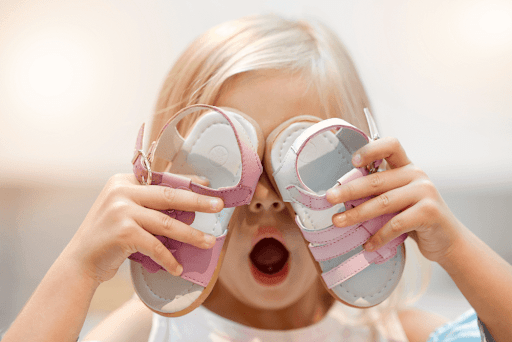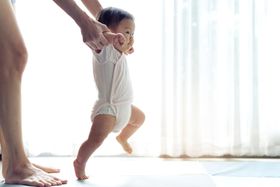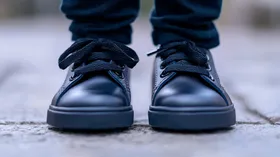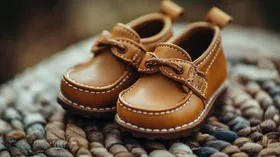5 Effective Treatments for Pigeon Toes: Help Kids Walk Confidently
Worried about your child's in-toeing? Learn about common causes, when to seek advice, and available treatment options
Published January 7, 2025.
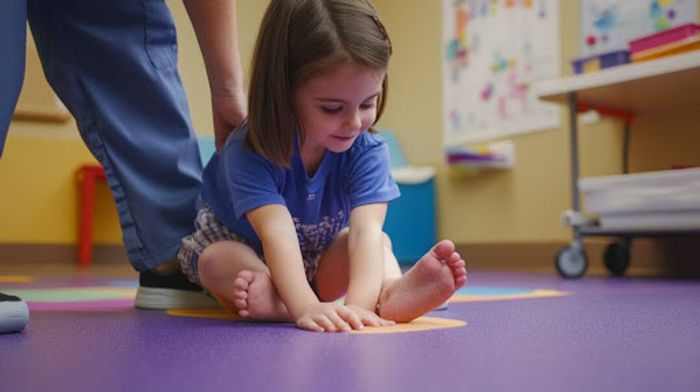
Does your child walk like a little penguin, feet turned inward with each step? You're not alone—millions of parents notice this endearing but sometimes concerning walking pattern in their little ones. While most cases resolve naturally, some kids may benefit from medical guidance to ensure proper development.
Let's explore what this means for your child and when to seek professional guidance.
» Start correcting your LO's in-toeing using orthopaedic shoes
What Is "Pigeon-Toeing"?
"Pigeon-toeing," also known as "in-toeing," describes a condition where a person's feet and toes point inward while walking or standing. This common childhood condition typically arises from variations in how bones and joints form and align during development.
» Explore more tips for treating kids with pigeon toes
What Causes In-Toeing?
Understanding the underlying causes can help you make informed decisions about your child's care. Medical professionals typically identify these primary causes:
- Structural: Femoral anteversion occurs when the thighbone twists inward, causing both knees and feet to point inward during walking. This natural part of development usually improves as children gain strength and coordination, similar to a door hinge that gradually aligns with use.
- Positional: Tibial torsion develops before birth due to the baby's position in the womb, causing the shinbone to twist inward. Most cases naturally correct themselves between ages 4 and 8, with noticeable yearly improvement.
- Developmental: Metatarsus adductus creates a C-shaped curve in the feet, affecting weight distribution during walking. While many cases self-correct, some might need gentle intervention to ensure proper foot development.
- Hereditary: Genetic predisposition means children whose parents experienced in-toeing are more likely to show similar walking patterns. This family connection helps doctors predict how the condition might progress over time.
- Muscular: Hip position development affects leg alignment due to naturally flexible hip muscles in young children. As core strength builds and muscles mature, walking patterns typically improve on their own.
» Learn about your baby's leg development
Monitoring Your Child's Development
While nature takes care of most in-toeing cases, staying attentive to your child's development helps ensure the best outcomes. Think of your paediatrician as your partner in tracking your child's progress—they can help distinguish between normal variations and situations that might need extra attention.
When to Consider Professional Help
Your kid's regular check-ups offer the perfect opportunity to discuss any concerns about their walking pattern. However, certain signs suggest it's time for a more focused evaluation:
- When your child frequently trips or falls more than their peers during normal activities
- If you notice signs of pain or discomfort during walking or running
- When daily activities become challenging due to their walking pattern
Seeking professional advice doesn't automatically mean treatment is necessary. Think of it as gathering information, like you would for any aspect of your child's development. Most children who require any intervention respond well to simple, conservative approaches.
» Support their feet with shoes designed for ankle stability
5 Effective Treatments for Pigeon Toes
Treatment choices depend on age, severity, and underlying cause. Options progress from least to most invasive:
- Targeted Exercises and Physical Therapy
- Corrective Footwear
- Ankle Foot Orthoses
- Surgical Realignment
- Tendon Release Surgery
1. Targeted Exercises and Physical Therapy
Physical therapy and targeted exercises are often the first line of treatment for children between ages 3 and 8. This approach takes advantage of children's natural bone flexibility during these developmental years.
This treatment offers several key benefits for developing children:
- Regular exercise sessions strengthen leg muscles and improve hip rotation, leading to better walking patterns
- Customised stretching routines help children develop proper foot placement habits
- Physical therapy promotes natural gait development without restricting movement
- Consistent practice helps reduce tripping incidents and improves overall balance
- Early intervention can prevent the development of compensatory movement patterns
While physical therapy shows promising results, success depends heavily on consistency. Parents should note that improvements may take time to become noticeable.
This treatment often achieves optimal results when combined with orthopaedic footwear or insoles. This ensures active training and passive support throughout the day.
» Strengthen your kid's ankles with effective exercises
2. Corrective Footwear
Specialised footwear is particularly effective for children aged 2 to 10 with mild to moderate pigeon toes caused by internal tibial torsion or metatarsus adductus. These shoes are designed to work with children's developing bones and soft tissues.
Here are the primary advantages of using orthopaedic footwear:
- Special design features support proper arch development and natural foot positioning
- Enhanced stability reduces the risk of tripping and falling during daily activities
- Improved weight distribution helps prevent strain on knees, hips, and lower back
- Structured support promotes proper muscle development during crucial growth periods
- Regular wear can help establish healthy walking patterns early in development
Parents should be aware that proper fitting is crucial for effectiveness. Regular size adjustments will be necessary as children grow. While footwear can be highly beneficial, severe cases may require additional interventions.
3. Ankle Foot Orthoses (AFOs)
AFOs are specialised braces recommended for children with moderate to severe pigeon toes, particularly when significant muscle weakness or poor coordination affects their gait. These devices provide structured support while allowing necessary movement for daily activities.
The following benefits make AFOs a vital treatment option:
- Rigid support helps maintain proper foot and ankle alignment during movement
- Custom-made designs ensure an optimal fit for each child's specific needs
- Improved stability gives children more confidence in their mobility
- Reduced fatigue allows for longer periods of comfortable activity
- Regular use can help prevent the development of compensatory movement patterns
While effective, AFOs require careful monitoring for proper fit and skin health. Parents should watch for signs of discomfort or irritation. This treatment works best with physical therapy to maintain muscle strength and flexibility.
» Check out our list of the best shoes for orthotics
4. Surgical Realignment (Osteotomy)
Surgical realignment becomes an option for children aged eight and older when conservative treatments haven't provided adequate improvement. This procedure is particularly beneficial for severe cases that significantly impact quality of life.
Essential considerations for surgical realignment include:
- The procedure involves precise bone cutting and repositioning to correct alignment
- Recovery requires a period of immobilisation followed by supervised rehabilitation
- Long-term results typically show improved balance and participation in physical activities
- Post-surgery physical therapy helps restore strength and mobility
- Regular follow-up appointments ensure proper healing and alignment maintenance
» Give your kid the support they need to run and play with ease
5. Tendon Release Surgery
Tendon release surgery is typically reserved for older children with severe pigeon toes caused by tight or shortened tendons. This intervention becomes an option when other treatments have proven insufficient.
Key aspects of tendon release surgery include:
- Surgical modification of affected tendons to allow better foot positioning
- Improved range of motion and walking mechanics after recovery
- Potential for a significant reduction in physical activity limitations
- Required period of immobilisation during initial healing
- Importance of post-operative physical therapy for optimal results
Parents should carefully consider potential risks, including infection, scarring, and possibly under or over-correction.
» Check out our list of the best shock-absorbing shoes for kids
Putting Your Child's Foot Health First
Watching your child's unusual gait might trigger concerns, but most cases resolve naturally with time. Keep those regular check-ups with your healthcare provider—they're your partner in ensuring healthy development and can spot any issues that might need gentle intervention early on.
Whether your child shows signs of in-toeing or not, investing in proper footwear during these crucial development years can make a world of difference.
First Walkers' orthopaedic shoes stand out as a fantastic choice. They offer the perfect blend of support and flexibility that growing feet need. These specially designed shoes help guide natural foot development while providing stability for those wobbly first adventures.
» Discover our wide range of orthopaedic shoes for kids with in-toeing
Disclaimer: First Walkers' information is intended for educational and informational purposes related to toddler footwear and feet. We encourage you to consider individual circumstances and consult qualified orthopaedists about specific conditions.
